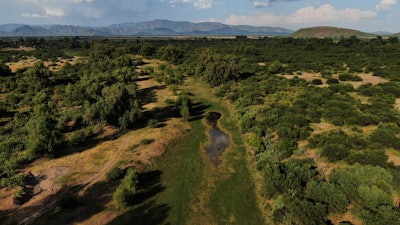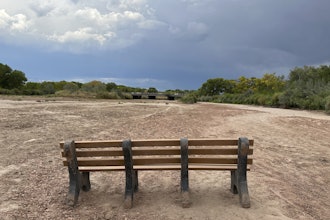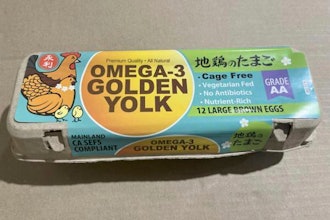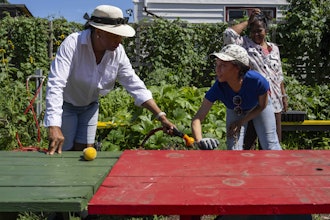
VICAM, Mexico (AP) — Mexico has become the deadliest place in the world for environmental and land defense activists, according to a global survey released Wednesday, and the Yaqui Indigenous people of northern Mexico are still mourning the killing of water-defense leader Tomás Rojo found dead in June 2021.
The murder of Indigenous land defenders often conjures up images of Amazon activists killed deep in the jungle — and Colombia and Brazil still account for many of the deaths. But according to a report by the nongovernmental group Global Witness, Mexico saw 54 activists killed in 2021, compared to 33 in Colombia and 26 in Brazil. The group recorded the deaths of 200 activists worldwide in 2021.
Latin America accounted for over two-thirds of those slayings — often of the bravest and most well-respected people in their communities.
That was the case with Tómas Rojo, who authorities claim was killed by a local drug gang that wanted the money the Yaquis sometimes earn by collecting tolls at informal highway checkpoints.
Between 2010, when state authorities built a pipeline to siphon off the Yaquis' water for use in the state capital, Hermosillo, to 2020, Rojo led a series of demonstrations and acts of civil disobedience, including a months-long intermittent blockade of the state's main highway, which caused millions in losses for businesses and industry.
People who knew Rojo don’t believe the toll money theory: They say he was killed by the powerful interests that stand to profit from the Yaquis’ land and water rights in the northern border state of Sonora, across the border from Arizona.
“Tomás demonstrated his capacity as a natural leader. He was a descendent of warriors,” said Fernando Jiménez, who fought alongside Rojo in a movement to defend the tribe’s water after the government built a dam to divert Yaqui water to rapidly growing Hermosillo in 2010.
Rojo's body was found half-buried near Vicam, nearly three weeks after he disappeared. He was initially identified by a red neckerchief he had been wearing when he left home.
Rojo was a descendent of Tetabiate, a Yaqui leader killed in a 1901 battle with the government, which deported the surviving Yaquis to work in slave-like conditions on henequen plantations in far-away Yucatan. The last battle against the Yaquis was fought in 1927, and included the government using airplanes against warriors still armed mostly with bows and arrows.
In 2014, Sonora state authorities tried to arrest Rojo and Jiménez on what Yaqui leaders consider trumped-up charges of kidnapping — that were later dismissed; Rojo avoided capture and fled to Mexico City, but Jiménez was jailed in the state capital in Hermosillo. The two kept the movement alive by speaking in Yaqui language in prison telephone calls.
“In prison, they made you speak Spanish,” recalls Jiménez. “They didn’t want me to speak my native language because they wanted to know what I was saying.”
The Yaquis are the legal owners of at least half the water in the river basin that bears their name and which they have defended through nearly five centuries of massacres and extermination. But they have seen much of their water redirected to feed burgeoning industries and projects to plant vineyards and avocados in the desert.
President Andrés Manuel López Obrador last month apologized to the Yaquis for past abuses and promised a series of infrastructure programs to improve their lives. But López Obrador has refused to stop the siphoning off of their water, though the director of the local water district, Humberto Borbón, says it is “100% illegal” and court rulings have backed the Yaquis' position.
The Yaquis find themselves at the center of a perfect storm: Everybody from Mexican drug cartels to water-hungry lithium mines covet their land. But they themselves live in poverty and often don’t even have running water in their homes.
César Cota, a bricklayer and farmer who worked alongside Tomás Rojo, sat beside the Yaqui River — now just a dry gully — and recounted 500 years of Yaqui struggle.
Near his home, in the village of Cocorit, Yaqui warriors confronted Spanish conquistador Diego de Guzman in 1533.
“Our ancestors drew a line in the dirt and said, ‘If you cross this, you’ll be at war with us,’” Cota said. “Since then, we haven’t stopped fighting. By now, in 2022, we shouldn’t have to still be fighting.”
Cota said the river was crucial to the Yaquis. When it flowed regularly, sturdy reeds grew on its banks which the Yaqui used to build everything from houses to funeral biers.
“It’s an injustice, it’s a great sadness to see our river without water,” said Cota. “That river bears our name. That is where animals live, our medical plants, our reeds live. We don’t have reeds anymore,.” When someone dies, relatives have to buy reeds to make their funeral bier.
“If this river were to flow again to the sea (the Gulf of California), that would be the greatest victory we could ever have,” Cota said.
Rojo's father, Guillermo Rojo, 84, lives in the traditional Yaqui village of Potam. In the family's humble home, almost everything — the fences, the walls, roofs, the sleeping mats and even the hearths — are made of woven reeds. Because of the semidesert landscape, the trees that grow here are small and twisted, so reed mats packed with mud serve as walls and cooking surfaces.
The elder Rojo recalled Tomás, his son, as “iron-willed ever since he was a young boy.”
“He didn't forget where he was from, who his ancestors were, and that may be what led him to become a social activist.”
The family's tradition is impressive: After Tetabiate — the elder Rojo's grandfather — was killed in battle in 1901, the Mexican government sold the surviving members of his family off as slaves.
“When people ask me who my ancestors were, I tell them I am the descendant of slaves,” he said.
Even today, most Yaquis in Potam live in reed houses; only those wealthy enough to buy and operate small electric pumps have running water.
While some still farm the surrounding fields, most Yaquis work as gardeners, bricklayers or laborers in neighboring cities. They farm corn and wheat on only about 42,000 acres (17,000 hectares), because they don't have enough water for irrigation, despite a 1930s presidential decree that guarantees them enough water to irrigate more than three times that much land.
That lack of water threatens the survival of Yaqui culture, whose traditional costumed Lenten-season dance performances are portrayed in statues across the state — even as the people themselves and their culture die off.
With little water, widespread poverty and no farm work available, younger Yaquis have begun to migrate to nearby cities and the U.S. border city of Nogales, and seldom return to fulfill their roles in traditional dances. Drug cartels moved in because they view Yaqui territory as a lucrative path to smuggle drugs to the U.S. And lithium deposits lie to the north of the Yaquis, and reportedly into their territory, as well.
“They have already granted about seven mining concessions in our territory, without ever having consulted us,” said Jiménez. “The violence started in our communities, with the rival gangs, abductions and everything led to a decline in Yaqui society. Addiction increased, with the use of methamphetamines undermining our young people.”
Rojo's father shook his head and added, “Before, they tried to exterminate us with guns. Now they are trying to exterminate us with addiction.”
The drug violence unleashed in Sonora has cost many Yaqui lives. In September 2021, just a few months after Rojo was killed, one of the cartels apparently rounded up five young Yaqui men in the village of Loma de Bacum and massacred them.
The cartel had set up clandestine landing strips for drug flights on Yaqui land. When the Mexican army found and destroyed the landing strips, the cartel reportedly suspected the Yaquis of passing information on the runways to authorities.
The Yaquis say that isn't true and that the young men were just innocent victims. Indeed, some still doubt the official identification of their remains.
But the Yaquis' main complaints have gone unanswered by the government, which has defended the use of water for industrialization in Hermosillo, which has a huge Ford automotive plant and rapidly expanding industry and suburbs.
The Yaquis themselves won’t say who they think ordered the killing on Tomás Rojo; they live in a largely lawless state where a drug cartel, corrupt politician or powerful businessman can order such a murder with impunity.
“It’s like it is in every case, here in Mexico and everywhere else in the world,” said Jiménez. “Governments always tend to conquer the strongest leaders, the strongest voices disappear.”






















